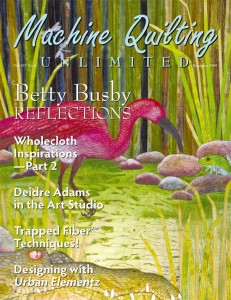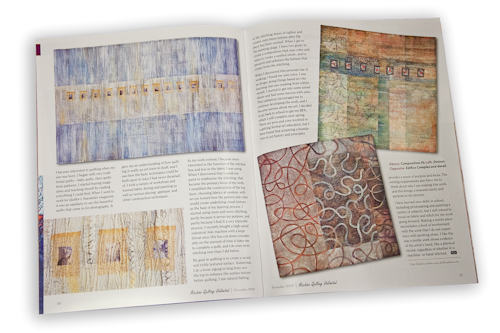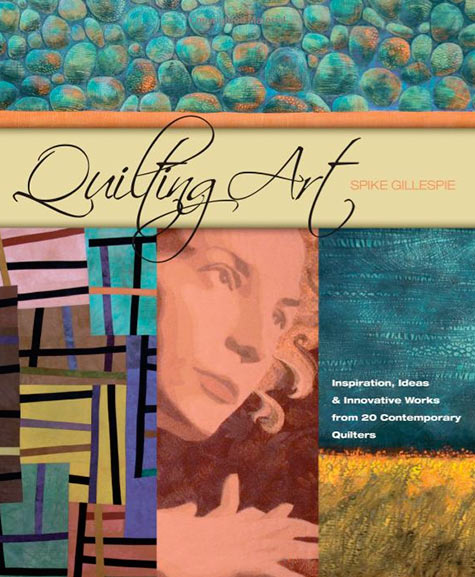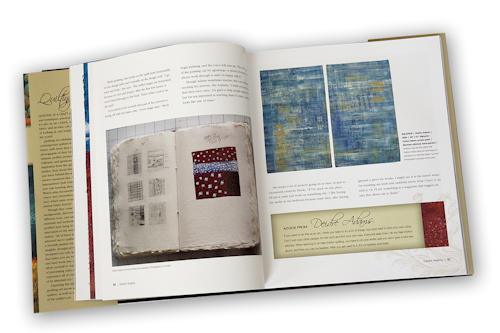Art & Fear — Part II
Several weeks ago, I posted Part I of an assignment for my Painting V class, a written response to a particular book, in my case Art & Fear: Observations on the Perils (and Rewards) of Artmaking by David Bayles & Ted Orland. The book is divided into two sections, which was convenient for the 2-part assignment.
Response paper – Art & Fear, Part II
By the time you get to part II of the book, you’ve become familiar with the book’s rhythm of bad news, good news. It’s a comforting seesaw going back and forth, first saying here’s a problem, but then don’t despair, here’s how you can deal with it.
Chapter VI, “A View Into the Outside World,” begins with all of the other things one must worry about in addition to the relatively simple matter of just making the art. One of the biggest is the way the work will be received by the outside world. People in general are fearful of anything that goes against the status quo, and stories of moral outrage or other negative feedback often result in artists’ self-censoring out of survival instinct. Along with this, there’s the problem of getting others to be interested in and to accept your work. The so-called “art world” has its predefined standards, and gaining acceptance in this world can be tricky. Without some level of ability to play the game, an artist has little hope of success in this world.
This chapter also raises the sticky subject of competition. Human nature being what it is, artists are also instinctively inclined toward competing with other artists. This inclination, if not kept in check, can get out of control. Competition can have positive consequences; for instance, if it drives an artist to create work at a very high level, to make one’s best work at all times. But the downfall here lies in determining what one’s best work is. We may rely on the outside world to tell us. The danger here is that you might just make work that you know will gain easy acceptance and thus avoid challenging yourself. In my own experience, I often find that the work I think is my strongest is greeted with a big yawn by others, while some that I think is less than stellar gets very positive responses. It’s a battle to keep myself true to my own vision and resist using certain combinations of colors or visual devices just because I know people have reacted positively to these things in my past work.
“Navigating the System” deals with the subject of commissions and the necessity of making art that can produce monetary returns. If you’re not fortunate enough to be completely independent of the need to make money from your art, then you probably have to make some concessions to complete freedom of self-expression. You have to figure out how to strike a balance between making work for others and making work for yourself, and which is more important to your survival. For me, making commissions has been a good and bad proposition. When I’ve been constrained to colors I’m not used to working with, it feels unfamiliar and forced. And even when there’s complete creative freedom, there’s also the anxiety of wondering whether the end product will be accepted by the client. The rewards, both financial as well as in the form of exposure, have so far been worth it. I won’t seek a commission, but if requested, I’ll give it a try if I feel I can work within the parameters given and also if I feel a good rapport with the client.
Chapter VII, “The Academic World,” discusses issues related to learning about art in school, from the viewpoint of both student and teacher. The discussion of the problems faced by an artist who decides to teach sound so formidable, I can’t imagine myself ever wanting to do it. But following the bad news–good news cycle, there’s the reminder that in spite of the soul-killing administrative requirements and lack of time artist-educators have to create their own art, there is the very fulfilling prospect of nurturing and learning from new artists and their fresh perspectives on life. For me, this has been one of the most rewarding aspects of being a student as well: mingling with other creative people and being inspired by their ingenuity and generosity.
Next, the authors discuss how books fit into the artist’s life. Besides technique and history, one of the most valuable aspects of reading about other artists is gaining “courage-by-association” (90). The more experience I have under my own belt, the more I enjoy reading about other artists and their processes, their fears and triumphs, and just simply their approaches to observation and life in general. Wisdom, insight, passion, logic, and introspection: all great things to be gained from reading the words of other artists. “Every artist could write such a book. You could write such a book” (92). Maybe I will!
Chapter VIII, “Conceptual Worlds,” is the seminal chapter of the book. Everything else rides on these three questions to be asked when viewing the work of any artist, as first proposed by Henry James: “What was the artist trying to achieve?” “Did he/she succeed?” And “Was it worth it?” (93). These words really resonated with me. I hadn’t thought to ask anything like this about my own work, but if I were to go back and do this with certain pieces now, I can see that these questions hold the key to understanding why I’m just not that excited about some of them. “Art that falls short often does so not because the artist failed to meet the challenge, but because there was never a challenge there in the first place.” Using the analogy of an Olympic dive, the authors stress that you get more points for degree of difficulty than for perfection. Technical perfection, while commendable and valuable, can also become a trap. Yes, you can keep doing the easy thing, that thing which resonated at the time, and seemed so fulfilling. But if you don’t challenge yourself to go beyond that, you don’t grow as an artist.
This chapter also contains the best explanation I’ve ever seen on the difference between art and craft, a question of vital interest to me. Using the Mona Lisa as an example, the authors ask: “Is this art?” Probably supposing that no one would deny it, they next ask, “What about an undetectably perfect copy of the Mona Lisa?” (97). The point is that art vs. craft is a question that must be considered not in isolation for an individual piece, but in the context of multiple works by one person. The art aspect is achieved when there is a conceptual leap from one piece to the next. “There’s a greater conceptual jump from one work of art to the next than from one work of craft to the next” (98). To me, this means that even though the techniques might be the same, someone is making craft if the end products are the same or very similar, and it’s art if each piece is unique in a substantial way. The artist must be vigilant to keep pushing this difference as his or her career matures, to be sure the work “continually generates new and unresolved issues.” The key difference between art and craft is not the tools but the ideas. “For the artisan, craft is an end in itself. For you, the artist, craft is the vehicle for expressing your vision” (98).
The book concludes with the assertion that in art (as in most of life), there are no reassuringly concrete answers to tell us how to get along on the journey. But you can find your way by asking the right questions. Each artist finds his or her own way through observation, working, and associations with other artists and activities, but in the end the thing that matters is making the work. If the artist doesn’t find a way to proceed, then that’s the end of his or her art-making. There is no single set of instructions that works for everyone. “The individual recipe any artist finds for proceeding belongs to that artist alone — it’s non-transferable and of little use to others” (117). If I choose to continue to make art, I face a lot of uncertainties, but as the authors conclude, “Curiously, uncertainty is the comforting choice” (118).







